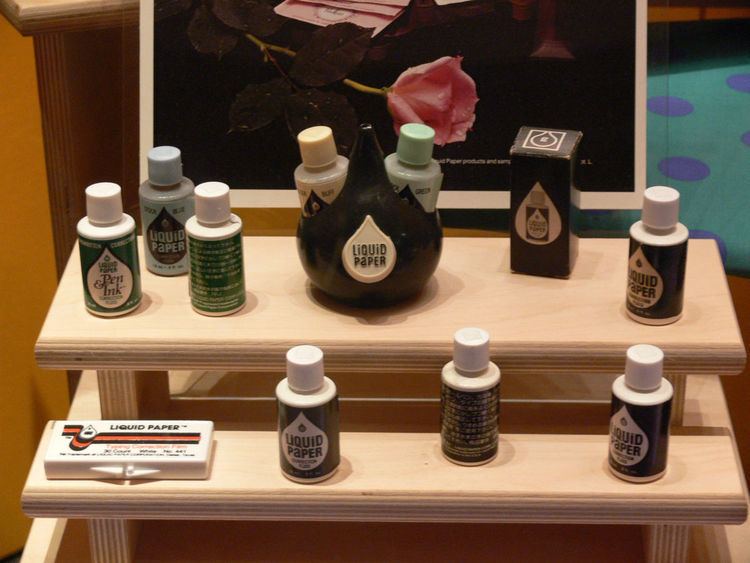 | ||
Liquid Paper is a brand of the Newell Rubbermaid company that sells correction fluid, correction pens, and correction tape. Mainly used to correct typewriting in the past, correction products now mostly cover handwriting mistakes.
Contents
Brand history
In 1956, Bette Nesmith Graham invented the first correction fluid in her kitchen. Working as a typist, she used to make many mistakes and always strived for a way to correct them. Starting on a basis of tempera paint she mixed with a common kitchen blender, she called the outcome fluid Mistake Out and started to provide her co-workers with small bottles on which the brand's name was displayed.
By 1958, Graham founded the Mistake Out Company and continued working from her kitchen nights and weekends to produce small batches of correction bottles. She was fired from her typist job as executive secretary after she made a mistake by typing in her company name (Mistake Out Company at that time) instead of her employer's name (Texas Bank and Trust) on a piece of correspondence. After this stroke of bad luck, she decided to devote her time to her new company.
The inventor offered the product to IBM, which declined the offer. She sold the product from her house for 17 years; the name was changed to Liquid Paper shortly after. By 1968, the product was profitable, and in 1979 the Liquid Paper Corporation was sold to the Gillette Corporation for $47.5 million with royalties.
In 2000, Liquid Paper was acquired by Newell Rubbermaid. In some regions of the world, Liquid Paper is now endorsed by Papermate, a widely known writing instruments brand (also owned by Newell Rubbermaid).
Graham's son Mike Nesmith, who first achieved fame as guitarist/singer in the popular 1960s pop band The Monkees, was the primary heir to her fortune upon her death in 1980.
Ingredients
Current MSDSs list Liquid Paper as containing titanium dioxide, solvent naphtha, mineral spirits, resins, dispersant, and fragrances.
Liquid Paper came under scrutiny in the 1980s, due to concerns over recreational sniffing of the product. The organic solvent 1,1,1-trichloroethane was used as a thinner in the product. Liquid Paper using this thinner was thought to be toxic and a carcinogen, but later studies have shown that although the thinner used was toxic there was no evidence of carcinogenicity. There were a number of studies linking fatalities to the trichloroethane contained in correction fluids, including Liquid Paper.
In 1989, Gillette reformulated Liquid Paper such that it did not use trichloroethane. This was done in response to a complaint under California Proposition 65.
